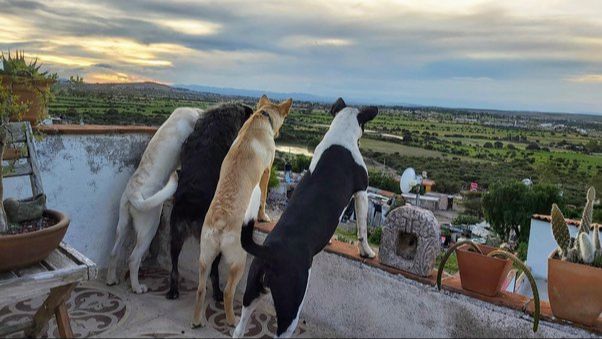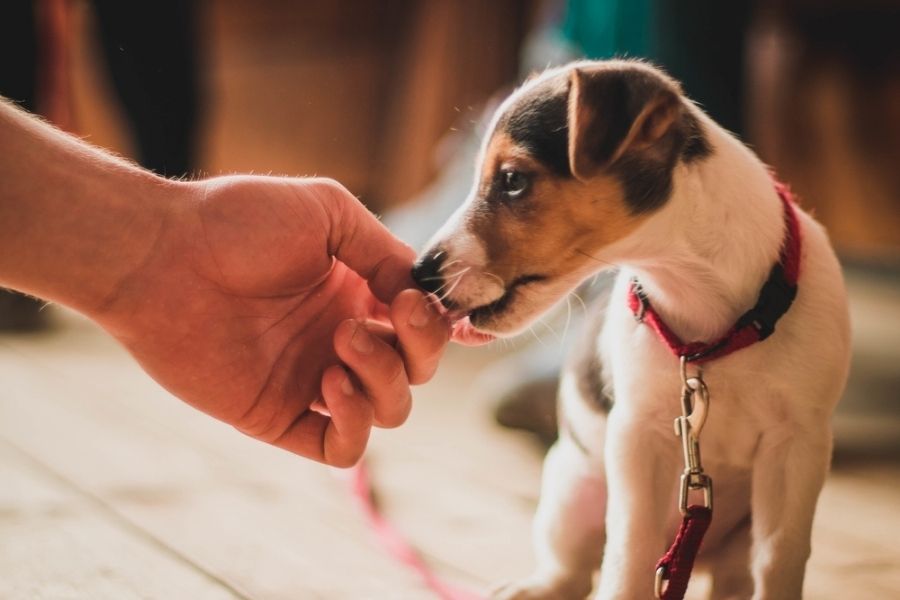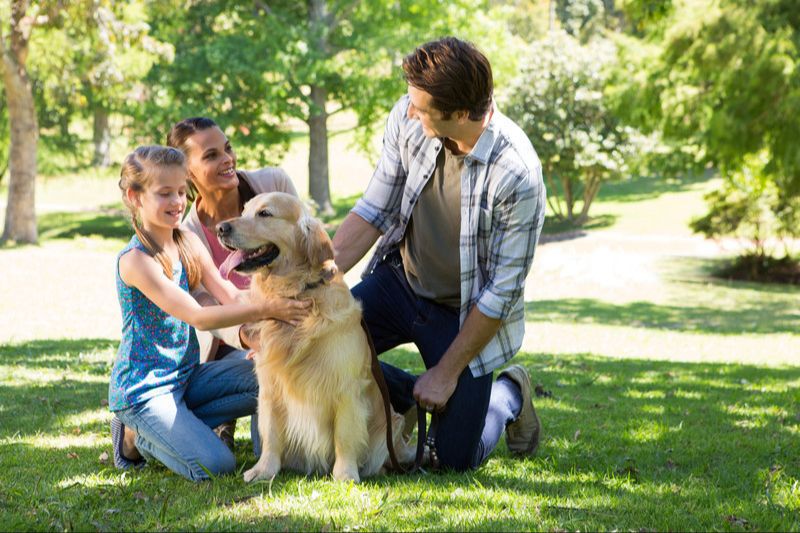Introduction
Dog pack behavior refers to the social structure and interactions between dogs living together in a group. Dogs are instinctually pack animals, meaning they naturally live in family groups with an established hierarchy and roles. While domestic dogs no longer live in wild packs, remnants of pack mentality remain in multi-dog households and dog-human families.
Understanding dog pack dynamics provides insight into canine social behavior and psychology. It can help owners better interpret their dog’s actions and respond appropriately. Knowing a dog’s place in the family pack and its role can also prevent conflicts and support a harmonious household.
This article will explore the origins of pack behavior in dogs, common pack roles and hierarchies, and how to recognize and influence pack dynamics between dogs and humans in a positive manner. Proper interpretation and application of pack theory promotes better relationships between dogs, owners, and other household pets.
History of Dogs as Pack Animals
Dogs descended from wolves and inherited their pack social structure. In the wild, wolves live in packs with complex hierarchies and social dynamics. The pack is led by an alpha male and female, and each member has a rank and role within the group.

Wolves cooperate to hunt, raise young, and defend their territory as a pack. They communicate through body language, vocalizations, and scent marking. Each wolf knows its place in the hierarchy and submits to higher-ranking members. Lower-ranking wolves do not challenge the alphas.
Primitive dogs likely lived in packs with similar social structures after being domesticated from wolves at least 15,000 years ago. As humans and dogs began cooperating, the human assumed the role of pack leader in the dogs’ social group. Dogs relied on their human “pack” for food and security. Researchers believe this pack mentality allowed dogs to develop strong bonds with humans.
References:
Common Dog Pack Roles
In a dog pack, each member plays a certain role that contributes to the pack’s overall wellbeing and survival. The most well-known roles are the alpha, beta, and omega positions. The alpha is the leader who makes decisions for the pack and oversees group activities. Alphas are confident and assertive. Betas are typically the second-in-command and support the alpha. They help reinforce rules and maintain order within the pack. Omegas have the lowest social standing in a pack and may be excluded or picked on by other members.
In addition to the hierarchical roles, dogs in a pack also take on functional roles like enforcers, scouts, hunters, and nurturers. Enforcers support the alpha in maintaining order and discipline within the pack. Scouts explore new territory and lead the pack on adventures. Hunters work together to catch prey for the pack to eat. Nurturers care for puppies and other pack members by providing comfort, play, and affection. Source Having an understanding of the various pack roles can provide insight into dogs’ social behaviors and relationships.
How Dogs View Humans in their ‘Pack’
Dogs are inherently social animals that live in packs with established hierarchies. As pack animals, dogs view their human families as members of their pack (Benz-Schwarzburg, 2020). Dogs will often treat their human owners as the “alpha” leaders of the pack, looking to them for guidance, approval, care, and control. Establishing yourself as a pack leader in your dog’s eyes involves providing structure through training, setting rules and boundaries, and being the one to initiate activities like walks, play time, or feeding.

Dogs form strong social bonds with human pack members who care for them. Spending quality time together through play, training, exercise and affection strengthens the dog-human bond. Signs that a dog views you as a close pack member include greeting you excitedly, following you around the house, waiting eagerly for your return, and looking to you for reassurance in uncertain situations (All Paws Express, 2022). With time, many dogs come to view their human caregivers as surrogate parental figures.
While dogs understand that humans are a different species, they will often pick up on human cues and body language that reinforce the pack structure. Calm, assertive energy and consistent leadership helps dogs view their owners as competent alpha pack leaders. Ultimately, dogs do not distinguish between human and canine pack members, as their instinct is to cooperate as part of a cohesive social unit regardless of species differences.
Influence of Breed on Pack Behavior
There are noticeable differences between dog breeds when it comes to pack hierarchy and working within a pack structure. This is largely due to the fact that certain breeds were developed for specific working purposes which required strict adherence to pack order.
For example, working breeds like German Shepherds and Border Collies are more inclined to readily accept their place in a pack hierarchy. They have been bred over generations to take direction from a lead dog or human handler when herding or performing other tasks. As a result, these breeds integrate into pack dynamics more seamlessly.
In contrast, some companion or toy breeds that were bred as lapdogs and status symbols do not have that same pack mentality ingrained in them. Breeds like Chihuahuas, Pugs, or Shih Tzus tend to be more independent and less likely to follow pack structure. They were not bred for work requiring coordinated teamwork and adherence to hierarchy like their working breed counterparts.
According to a comprehensive study on canine behavior published in the National Library of Medicine, herding breeds showed the highest tendency to obey and follow human direction, while toy breeds showed the least obedience. This demonstrates the significant impact of original breed purpose on modern day pack cooperation [1].
Therefore, when establishing a harmonious dog-human pack, it is important to recognize and accommodate these innate breed differences. With patience and proper training, dogs of any breed can successfully integrate into a family pack structure.
Impact of Training on Dog-Human Pack Dynamics
Proper training can help establish healthy pack dynamics between dogs and humans. According to the American Veterinary Society of Animal Behavior, dominance-based training methods that rely on physical force or intimidation are not effective and can actually increase aggressive behaviors. Instead, positive reinforcement training focused on clear communication, boundaries, and socialization is recommended.

Humans can establish leadership and teach commands through reward-based training, without having to assert dominance. Setting rules, routines, and boundaries with positive reinforcement helps dogs understand their place in the family pack. Proper socialization and controlled interactions with other dogs and people also teaches appropriate social behaviors. Overall, training focused on clear communication, rewarding good behaviors, and setting reasonable boundaries is the best way to improve pack dynamics between dogs and their human families.
Effects of Dog Pack Hierarchy in Multi-Dog Homes
Studies show that dogs are social animals that naturally form packs with clear hierarchies (Social Dynamics and Behavior Problems in Multiple-Dog …). In homes with multiple dogs, having a well-defined hierarchy and leadership structure has several benefits for maintaining harmony.
An established hierarchy reduces conflict and stress among dogs by making it clear which dog is dominant over the others (How to Manage a Multi-Dog Household). The dominant dog serves as the pack leader, while the other dogs know their place in the order. This minimizes fighting over resources, territory, and attention.
Humans need to establish themselves as the ultimate pack leader in a multi-dog home. Setting rules, providing structure, and asserting authority helps to maintain the hierarchy and your leadership position. Consistent obedience training also reinforces your role.
Tips for managing multiple dogs include separating food bowls, crates, and toys to avoid resource guarding; distinct training times one-on-one; scheduled attention and playtime; and intervening assertively in any conflicts (Keeping the Peace in a Multi-Dog Household). Maintaining a clear hierarchy and leadership takes diligence but pays off in peaceful pack dynamics.
Signs of Unhealthy Dog-Human Pack Dynamics
While dogs naturally form packs and hierarchies, unhealthy dog-human pack dynamics can lead to problematic behaviors in our canine companions. Some common signs of an unhealthy dynamic include:
Aggression – Dogs may show aggression like growling, snapping, or biting towards family members if they feel they outrank humans in the pack hierarchy. They may try to control resources like food, toys, beds or even access to people. This stems from a lack of boundaries and can be improved through training that reinforces human leadership.
Anxiety – Anxious behaviors like barking, whining, pacing, or destructive acts can indicate a dog lacks confidence and security in its place in the pack. The dog may be uncertain of its role, or feel the need to constantly reassert its dominance. More exercise, mental stimulation and clear structure can help relieve anxiety.
Destructive Behaviors – Dogs that chew, dig, urinate or defecate inappropriately may do so out of stress, boredom or frustration with their pack status. Providing adequate outlets and setting rules helps curb destructive tendencies.
Over-bonding – Some dogs become overly attached to a single person, following them constantly, exhibiting separation anxiety, or refusing to obey others in the home. This over-bonding disrupts the entire family pack structure. Encouraging interactions with all family members can help restore balance.
Addressing the root causes of these behaviors through training, boundaries and meeting the dog’s needs is key to reestablishing a healthy pack dynamic where everyone understands their place.
Methods for Improving Dog-Human Pack Behavior
There are several effective methods for improving the dynamics between dogs and humans living together in a “pack.”

One important method is providing consistent leadership (Whole-Dog-Journal.com 2022). Dogs naturally look to leaders for guidance, and consistent rules and routines from their human helps fulfill this need. Setting fair boundaries and upholding them calmly helps reinforce the human’s leadership role.
Additionally, formal training is highly beneficial for improving dog-human relationships (VCAAnimalHospitals.com 2022). Obedience training strengthens communication between dog and handler. It also provides mental stimulation that satisfies the dog’s innate need for a job or purpose.
Environmental management can reduce anxiety and conflicts in multi-dog homes (K9BehavioralServices.com 2022). Providing each dog their own space, toys, food bowls, and bedding helps avoid resource guarding. Allowing plenty of exercise also helps minimize undesirable behaviors.
Lastly, extensive socialization from a young age prevents fearfulness and teaches dogs to look to humans for guidance when encountering new stimuli (Whole-Dog-Journal.com 2022). Socialization to people, places, sounds, and other animals creates more confident dogs that integrate smoothly into human “packs.”
Conclusion
In conclusion, understanding dog pack dynamics and how your dog views you within the pack hierarchy is crucial for maintaining a harmonious and happy home. Dogs are instinctually pack animals, and even though they have evolved alongside humans for thousands of years, their pack mentality remains strong. By being a confident and fair pack leader, providing adequate training, socialization, and outlet for natural behaviors, and ensuring all members of a multi-dog home are compatible, owners can avoid many common pack-related behavior issues. Knowledge of typical dog pack roles and signals of unhealthy pack dynamics empowers owners to make adjustments that improve their relationship with their dog and enable both to thrive within a human family pack.